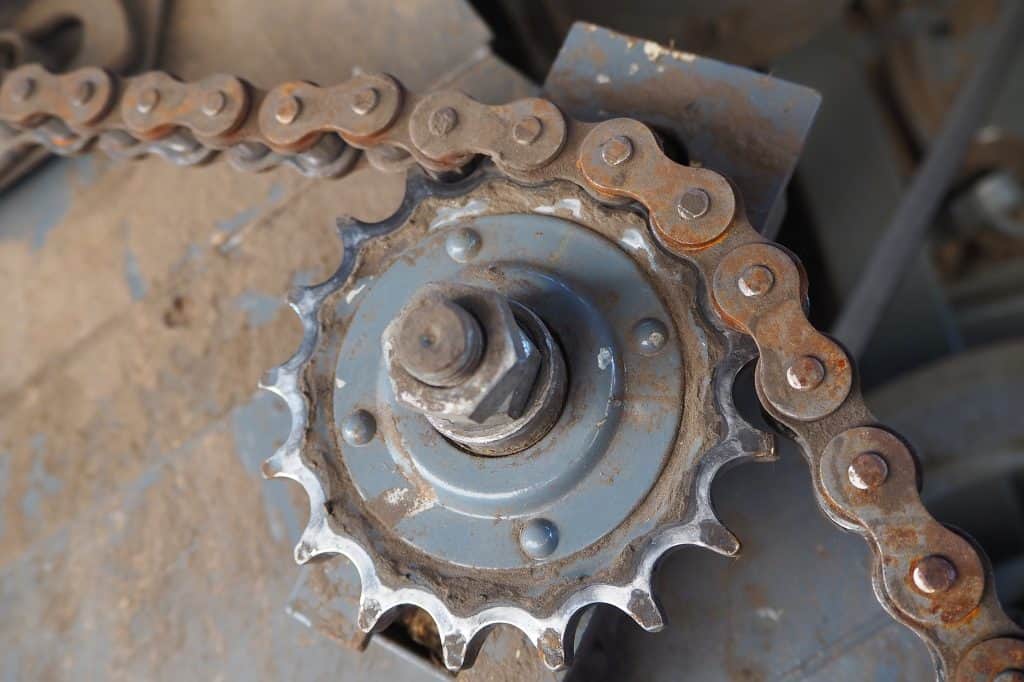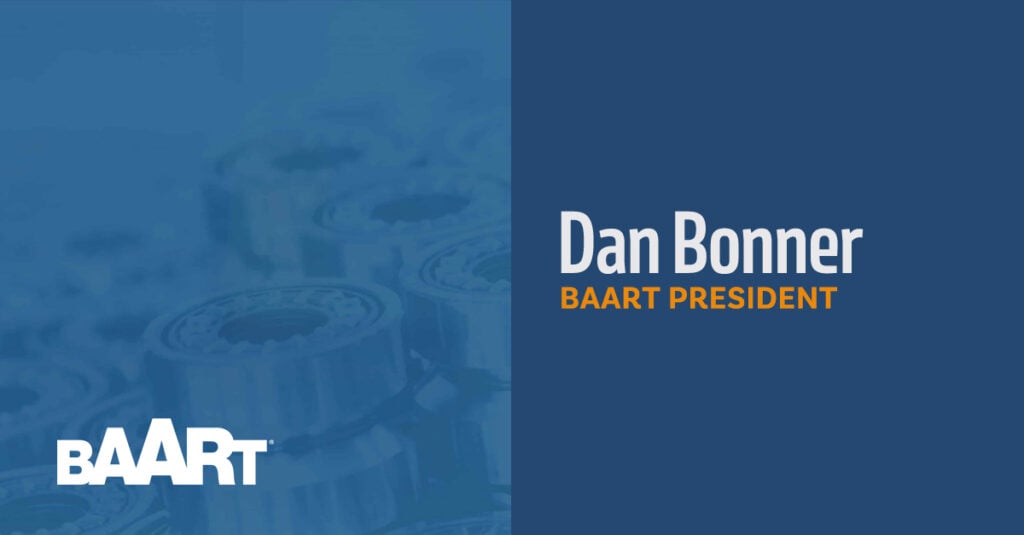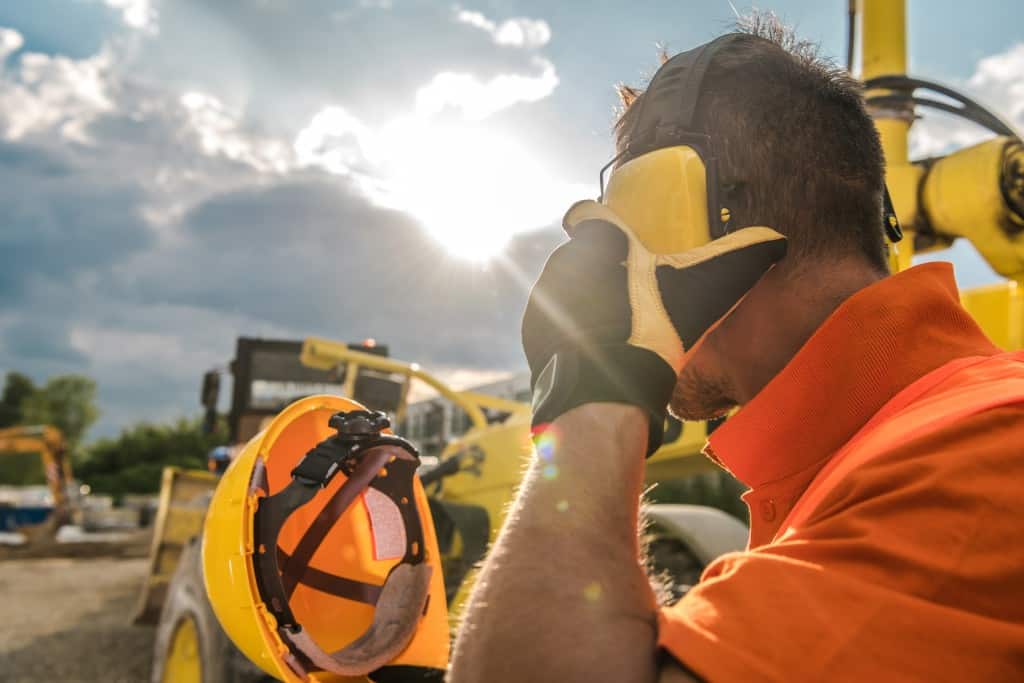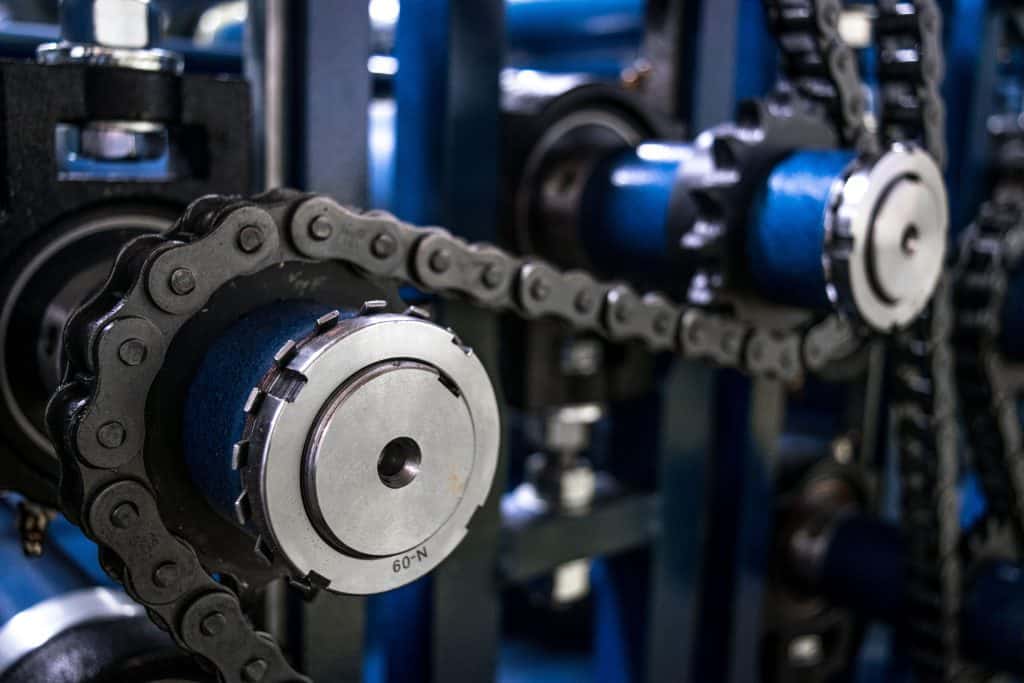Roller Chain Wear: Inside Roller Plates, Sprocket Tooth Sides

Are you seeing wear on the inside of your chain side plates or the sides of your sprocket teeth? Some wear and lengthening of roller chain as it operates is to be expected. However, when wear is excessive or abnormal, as in the above case – you’ll want to take a closer look.
Replacing parts more frequently than necessary isn’t a sustainable practice. Keeping your roller chain in peak shape is essential for long operational life. That’s why it’s crucial to find the root cause of abnormal wear and correct it.
Unusual wear patterns on the inside of your chain plates or on sprocket teeth typically arrive through an alignment issue. When the sprockets in your chain drive aren’t aligned correctly, the chain will move off-center and wears unevenly. Eventually, this can lead to component failures, excessive noise, and work slowdowns.
Let’s walk through things you should consider.
How was the chain drive installed?
When installing a chain drive, it’s crucial to ensure the shafts and sprockets are both aligned, with the sprockets securely locked to the shaft. Shafts need to be aligned angularly, meaning they must be parallel to one another – which is checked by measuring between them at multiple points. Sprockets must be aligned axially, meaning the faces of the sprockets are in line with one another. These alignments should be verified using either a laser or a straight edge.


Neglecting the alignment of either the shafts or sprockets will force your roller chain to curve to match any misalignment that is present. This will cause the sprocket face to contact the inside of the chain plate. This irregular contact will make it more difficult for the chain to disengage from the sprocket, resulting in more friction and excessive wear.
Example of a sprocket tooth wear pattern:

The sprockets must be centered and parallel for the roller chain to move smoothly over their teeth. Anything less will lead to excessive wear and eventual replacement ahead of their scheduled maintenance. In this case, remove the chain and realign the sprockets. If necessary, replace the parts and make sure when they’re properly aligned to prevent a repeat situation.
Check for chain interference
Once you’ve checked the sprocket alignment, it’s time to look at your roller chain. Even if the sprockets and shafts align on every plane, an obstruction may still push the roller chain out of place.
Carefully examine your system to see if there is anything that could be in the way. Remove the items interfering with the chain. In situations where the impediment is unclear or is not movable, consider installing a chain guide.
Vibrating sprocket issues
One of the tell-tale signs of excessive vibration in your drive system is noise. When the roller chain creates unusual noise, and the sprocket appears to rotate in a non-linear path, there is an obvious issue. It is highly likely that the sprocket bore is no longer (or was never) fully perpendicular to the sprocket face. This can occur in both a plain-bore sprocket or a bushed version.
When this occurs in a bushed sprocket, chances are it was mounted incorrectly. Proper installation procedures will eliminate this issue. Concerning plain-bore sprockets, there are two possible causes. Inaccurate finishing of your sprocket’s bore will cause it to rotate imperfectly. Undersized shafting can also cause imbalance and vibration. When securing a sprocket with set screws, undersized shafting may cause the sprocket to mount inaccurately, however slight.
The solution will vary depending on the cause. Remounting the bushing to the sprocket is an easy fix. For plain bore sprockets or undersized shafting, though, a component will need replacing to bring the chain drive back to normal operating conditions.




